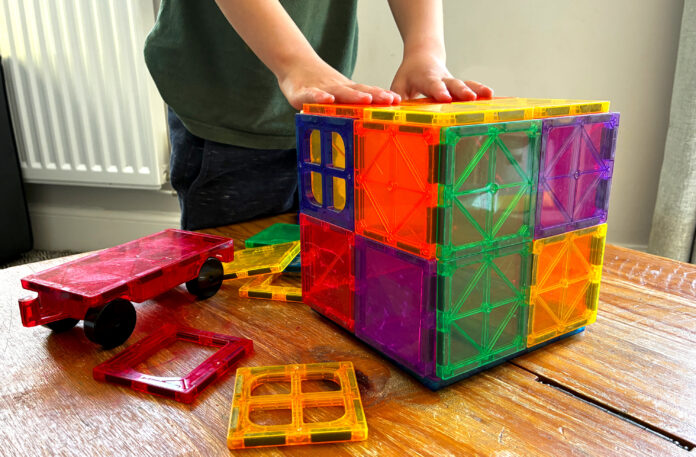Parents are being warned against buying toys containing magnets after new data revealed that hundreds of children have been hospitalised from swallowing them.
A study found that around 300 UK youngsters were admitted to A&E in a single year after ingesting the tiny metal items – with one in 10 requiring life-saving operations.
Doctors also revealed that children who swallow two or more magnets were at a far higher risk of long-term damage, as the pieces can clamp together in their tummy.
The study, by the University of Southampton, is the first to investigate how many children under the age of 16 in the UK have been affected.
Lead author Professor of Paediatric Surgery Nigel Hall , who works at the University and Southampton Children’s Hospital, said retailers must do more to increase warnings on magnetic toy labels.
He added: “Our study reveals that 300 children and young people are being hospitalised each year in the UK after ingesting magnets.
“These magnets have potential to harm a large number of children and young people and increase work for the NHS.
“Yet many magnetic toys provide very little warning for parents and caregivers of the dangers they pose, particularly those purchased from online marketplaces.
“Having an unplanned emergency operation is a traumatic experience for any child and their family – and needing a surgical procedure means time in hospital for days after.
“Around one in 10 of these young patients had surgery with most ending up with serious problems, like needing part of their bowel removed or requiring a stoma.”
More than two in every 100,000 children swallow magnets each year
The new Southampton study, MAGNETIC, is published in the Archives of Diseases in Childhood journal .
More than two in every 100,000 children swallow magnets each year according to the data, which was provided by 66 UK hospitals between May 2022 and April 2023.
However, that figure is likely to be far higher, according to Prof Hall, as not all hospitals shared their data with the University team.
The study also found that six per cent of swallowing cases were linked to viral social media trends, where the children – mostly girls – were trying to imitate tongue piercings by placing small magnets in their mouths.
Magnets are found in a wide range of toys, such as magnetic ball sets as well as fake piercings and other household objects.
The research has been welcomed by the Child Accident Prevention Trust, which is the only UK charity to focus on preventing death and serious injury to young people from avoidable accidents.
Its Chief Executive, Katrina Phillips OBE said: “Take great care when buying magnets. We’ve seen magnetic toys with a flux of 850, 17 times higher than the legal limit of 50.
“These super strong magnets can rip through a child’s guts and leave them with life-changing injuries. One boy has died.
“Take a moment to check who you’re buying from. Don’t assume that, just because you can buy something, it must be safe.”
Doctors from Southampton also emphasised the importance of attending emergency departments early if a child is known or suspected to have swallowed a magnet.
Prof Hall added: “Most children who have swallowed a magnet do not show any symptoms, so it is really important that all cases have an x-ray to find out for certain.”
Deputy Chief Executive Sarah Smith from the Office for Product Safety and Standards, Department for Business and Trade, said: “The Office for Product Safety and Standards continues to raise awareness of the hazards to children when swallowing small magnets.
“Our ‘Nil by Mouth’ Campaign has consistently warned of these dangers along with those from button batteries, small toy parts and imitation food.”







